The flying electric EEL
Ampaire leads into the world of tomorrow
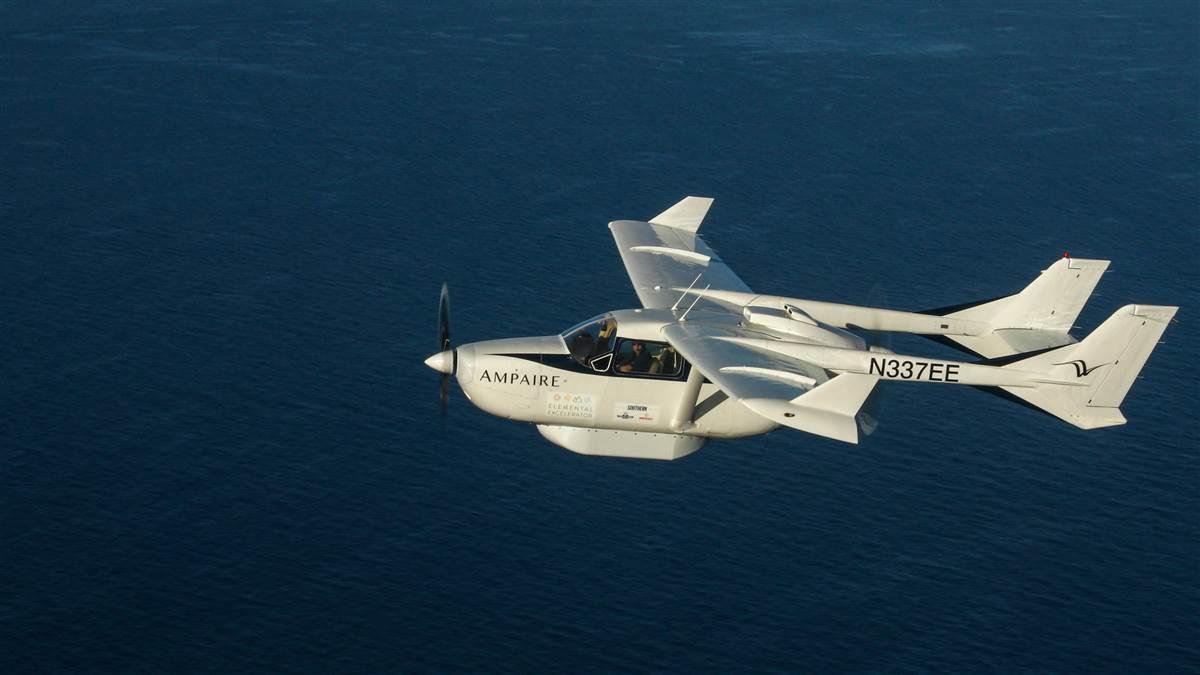
The easiest way to describe it, and the way they often do: They’re making the Prius of the sky by starting with the engine.
Ampaire calls its hybrid electric drivetrains AmpDrives. “It can be used in an integrated parallel hybrid…almost like a generator,” says CEO Kevin Noertker. “And then specific in the Caravan,” he notes, which is their first target market. “We have our AMP H570. H for hybrid, 570 for 570 kilowatts. It’s pretty straightforward. “Now, this is a direct drop-in replacement for your turbine engines that are traditionally in Caravans and Twin Otters and other airplanes of this type,” he explains. In the parallel hybrid system, the compression-ignition engine creates 550 horsepower, and the integrated electric powertrain adds another 200 to 250 horsepower. The AMP 570 will be Ampaire’s launch product, and Noertker believes that, as of this writing, they are about 18 months away from earning a supplemental type certificate. Noertker notes that the company is also working with maintenance, repair, and overhaul bases in a partnership model to make sure the maintenance side is also as streamlined as possible.
 Noertker says, “It will be less expensive to operate specifically because we have over 50 percent fuel savings on the engines, and we expect that the maintenance costs will be lower as well,” even with the added complexity of a parallel electric system.
Noertker says, “It will be less expensive to operate specifically because we have over 50 percent fuel savings on the engines, and we expect that the maintenance costs will be lower as well,” even with the added complexity of a parallel electric system.
The company started in 2016 in Temecula, California. “That was where we could find a free garage from my co-founder’s parents,” says Noertker. “It’s where we built our first prototypes.” Before founding Ampaire, Noertker earned a degree in mechanical engineering at CalTech and conducted robotics research at NASA’s Jet Propulsion Laboratory, before joining Northrop Grumman for stealth technology research and development. He credits his time at Northrop for teaching him how to develop “very advanced technologies” but in a way that viewed the “life cycle of a system,” which thus informed his strategies at Ampaire.
The hybrid approach means Ampaire can blaze a trail with available technology, rather than waiting for battery technology to catch up to dreams and desires, as some other companies that are still seemingly committed to being fully electric are. “You think about charging infrastructure, range anxiety, the economics of operations. These are the things that we’re able to overcome, battery energy density as an example, by bringing these hybrid propulsion systems to market. So, where we focus our day-to-day is about maturing those systems,” says Noertker.
Noertker has been careful to keep the company lean—Ampaire has a worldwide staff of 20 (most in the United States, one in the U.K., and one in China)—and not to grow too quickly and not to over-promise (weren’t we supposed to have flying Ubers by now…?). Ampaire has hit major milestones, starting with the first flight in June 2019, test runs in Hawaii, Scotland, and Alaska, and then a record-breaking endurance flight of 12 hours with two hours reserve in 2023, and more than 30,000 collective miles flown.
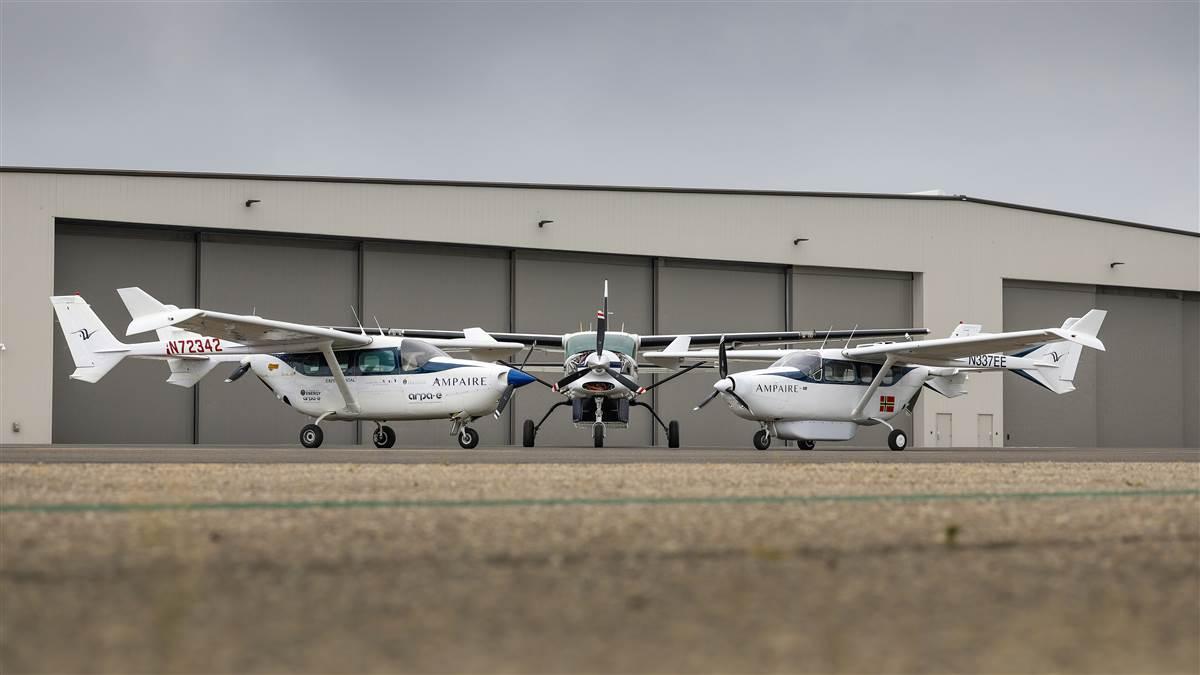
In the air
After moving to downtown Los Angeles, then a five-year stint at the Hawthorne airport (HHR) “in the shadow of SpaceX,” Ampaire found a new home at Long Beach Daugherty Field (LGB) in Long Beach, California in April 2024. Long Beach is where the bulk of the day to day takes place, and for now, flight operations for Ampaire’s experimental aircraft take place out of Camarillo (CMA), considerably less densely populated than Los Angeles, and which the FAA prefers for flight testing.
Although the launch market looks like “Cessna Grand Caravans, Twin Otters, Sky Couriers, Quest Kodiaks,” the original testbed aircraft are a pair of Cessna Skymasters, which Ampaire keeps along with its testbed Caravan at CMA. Ampaire’s contract test pilots—Justin Gillen and Elliot Seguin of Wasabi Aero—are both Mojave-based engineers with experience at Scaled Composites; Gillen and Seguin have been with Ampaire since nearly the beginning. They are also both the kind of people you just want to keep talking in a hope that you’ll learn something you never knew.
At Ampaire’s Camarillo wing, Gillen introduces their Skymaster, noting that it was most practical to add a modified powerplant to an existing airframe, resulting in a functional hybrid aircraft, although not necessarily the sleekest. Gillen says he is looking forward to a future where electric airplanes can be “designed and built from the ground up.”
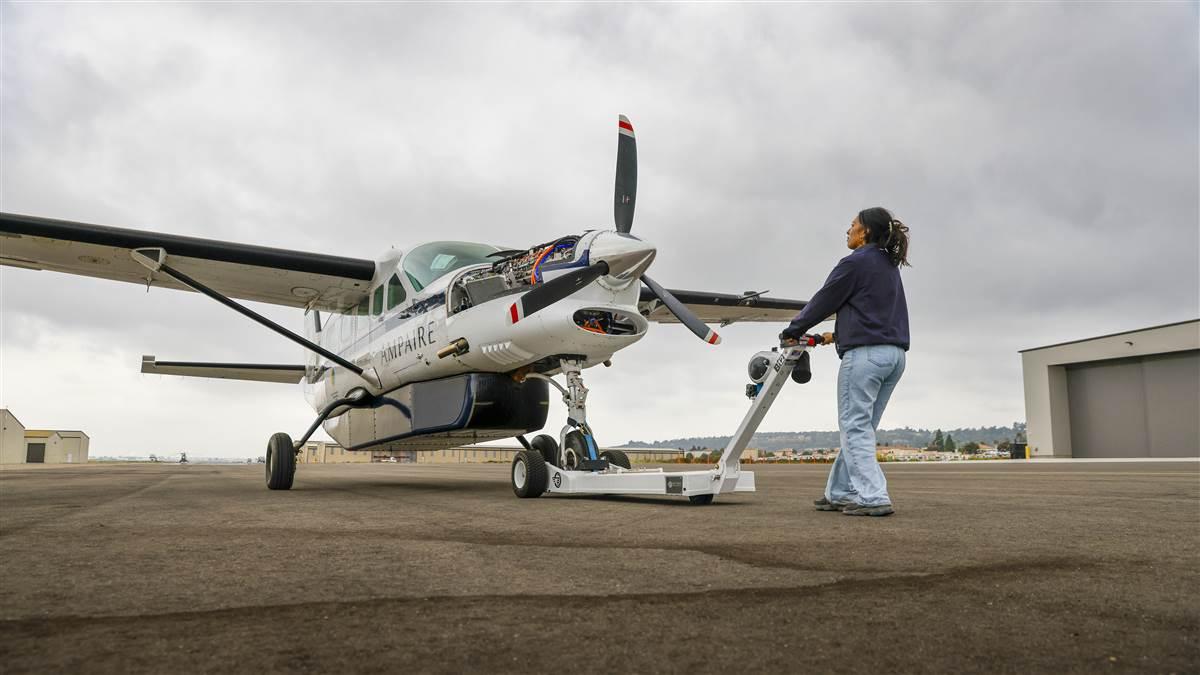
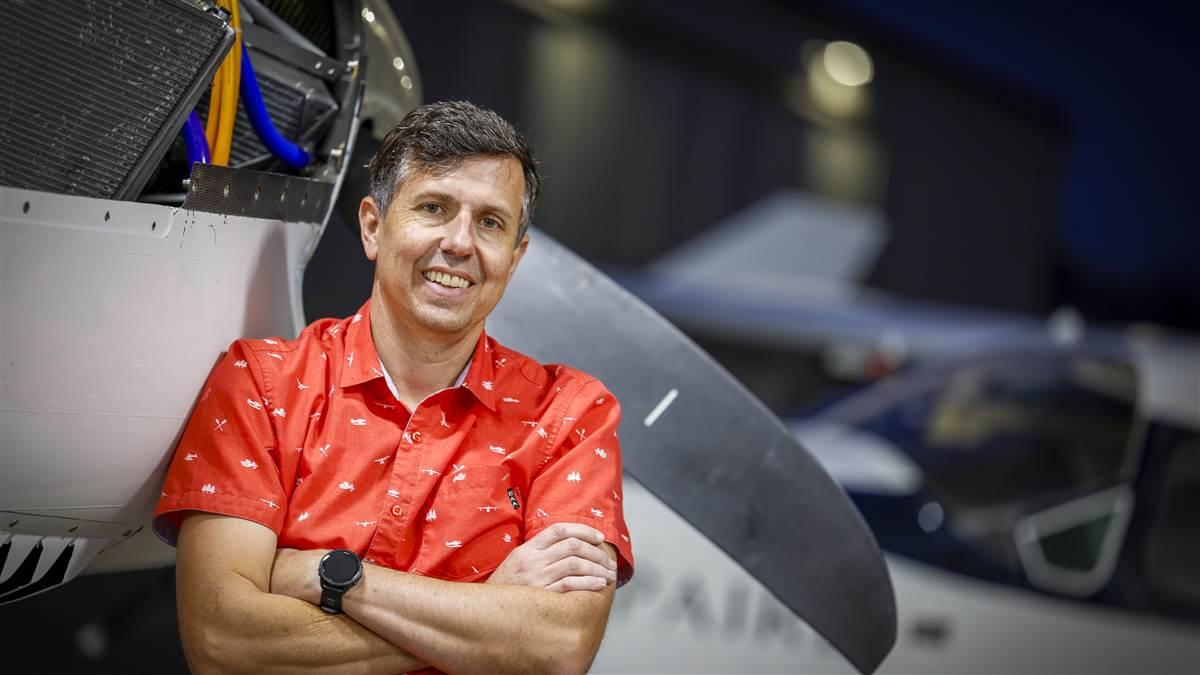
But as for the Skymaster, they’ve modified it. They call this one, N337EE, the Electric EEL. “The original Skymaster came with two Continental IO-360s. This Skymaster behind us had the original 360 in the back removed to be replaced with this STC bigger IO-550,” says Gillen. “Then we took the front engine off the 360 that was still there from an original installation and installed the Ampaire electric power system. The electric power system is basically equivalent to the engine that we took off in terms of power rating. Then, of course, with the bigger engine on the back, we get the added performance of that big engine on the back.”
“Where do airplanes use the most power? Obviously, it’s in takeoff and climb phases,” Gillen says. “What Ampaire’s goal has done is identified that extra power that you need for the climb, takeoff and climb, that you don’t really need in cruise, you can replace with the electric power,” he says. “So, it’s like a power augmentation system, if you will.”
Seguin will be flying today, and he notes the only tricky thing is the adjustments made to both powerplants, and to make sure you’re adjusting the correct one—electric in front, IO-550 in the back—throughout the flight. Seguin notes that the battery in a belly pod on the Skymaster is the big safety hazard and describes the smoke hoods to use in case of emergency, but otherwise, the safety briefing is standard. Electrical fire and thermal runaway are the worst-case scenarios, and he recounts having to call ahead to fire stations on various missions to tell them if they land off-airport and see an airplane on fire, to absolutely not try to put it out with water. “You’ve seen videos of Teslas on fire, right?”
Engine start begins with the electric engine emitting a wholly undramatic whir and hum we’re used to hearing near electric cars, not airplanes. Electric is started first because otherwise you wouldn’t be able to hear it start at all. Ampaire’s model is to provide a fuel, and therefore cost, savings by augmenting combustion power with electric power. In takeoff, this is where the most savings can be made and will be especially effective for short hop essential air service-type flights around the world (think delivering mail in places like the Hawaiian Islands and the coast of Scotland, where Ampaire has already done some proof-of-concept record-breaking flights).
In the air, everything is normal, familiar. It feels nearly exactly the same as flying any aircraft, the only persistent discernable difference is the variation in sound from the unsynced propellers. Otherwise, it is a fun nearly 45-minute ride in the Skymaster around Ventura County, over the recent fire burn marks near Santa Paula, and down the coast before turning back toward CMA. On the way in and in a small descent, Seguin pulls the power back on the combustion engine, powers up the electric, and finds VY, which he says is what he looks for, in sight and sound, whenever he’s prioritizing the electric engine in level flight. Fuel flow drops to 3.8 gph. It is thrilling not because flying under electric power is different, but because it is the same.
The intention is not for this innovation to be limited to commercial operators, and while it might take a little longer, Ampaire intends eventually to bring its tech to the wider GA fleet.
“One of the other things that I think will be really impactful is that when you switch over to electric, you’re able to reduce the cost of flying,” says Noertker. “When you can reduce the cost of flying, you can now reduce the cost of going and getting a pilot’s license. When you reduce the cost of a pilot’s license, you enable more people to go get them. And it not only expands the number of pilots and enthusiasts in the industry, it solves the pilot shortage that the airlines are facing right now. It adds a positive feedback cycle into the industry.”
The goal is to eventually have the testbed aircraft in Long Beach, but for now, the fleet will stay in Camarillo. “As they say, you know, paperwork makes airplanes fly and so experimental airplanes have their own set of added work that comes with it just to make sure that we’re airworthy and complying with all the regulations,” says Gillen. “It’s not hard, it’s just it’s more frequent than on the certified side. Definitely not quite as fun as flying,” which he says is “obviously the best part of the job.”
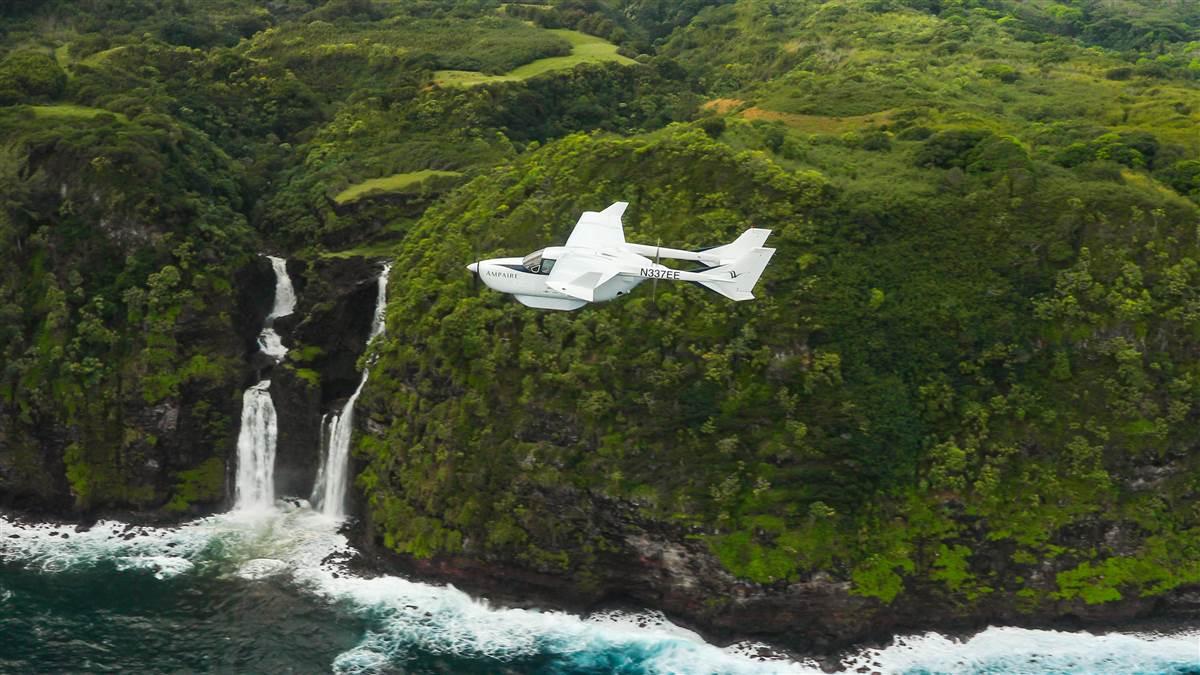
The new age
Ampaire’s long-term goal is to be part of electrifying all of aviation. “There are a few things that we can be certain of. Number one is that electrification is driving a transition that’s as big as the jet age,” says Noertker. “Why do we call it the jet age? Because new propulsion changed everything. So where are we today? New propulsion yet again, for the third time in history, once in a century opportunities, is changing aviation. Now this doesn’t happen overnight, and it has to progress over time. It starts with general aviation, regional aviation, and then up into the transport class. And it’s really about just thoughtfully managing that transition. But that’s the big opportunity as we see it.”
Noertker is determined, and notes that the nature of the aviation industry is one of Ampaire’s biggest challenges.
“This is an industry which is not familiar with innovation at the same pace that much of Silicon Valley is familiar with innovation. Aviation has a lot of hardware in it, and it also has a lot of regulations. And this makes it challenging to move quickly because iterations on hardware take more time and money. And highly regulated industries pull the ability to control your own destiny out of your hands in some ways and put it into the regulatory bodies. For those reasons, it’s challenging for companies in this space to attract large amounts of capital,” said Noertker.
While the next couple of years will determine Ampaire’s future, the company seems well set up for success. Probably one of the most significant feats remains that they are flying, flying now, and flying their CEO with their technology. In 2023, Noertker, not yet a pilot himself, flew as a passenger into the Regional Air Cargo Carriers Association (RACCA) conference in the Skymaster.
“To fly into any of these airports and to be able to do so in your own aircraft is just really special. And I think it causes people to realize that this future that we’re dreaming of isn’t actually all that far away. It’s just right on the horizon.” 
The Electric Eel
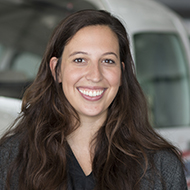
 ampaire.com
ampaire.com

